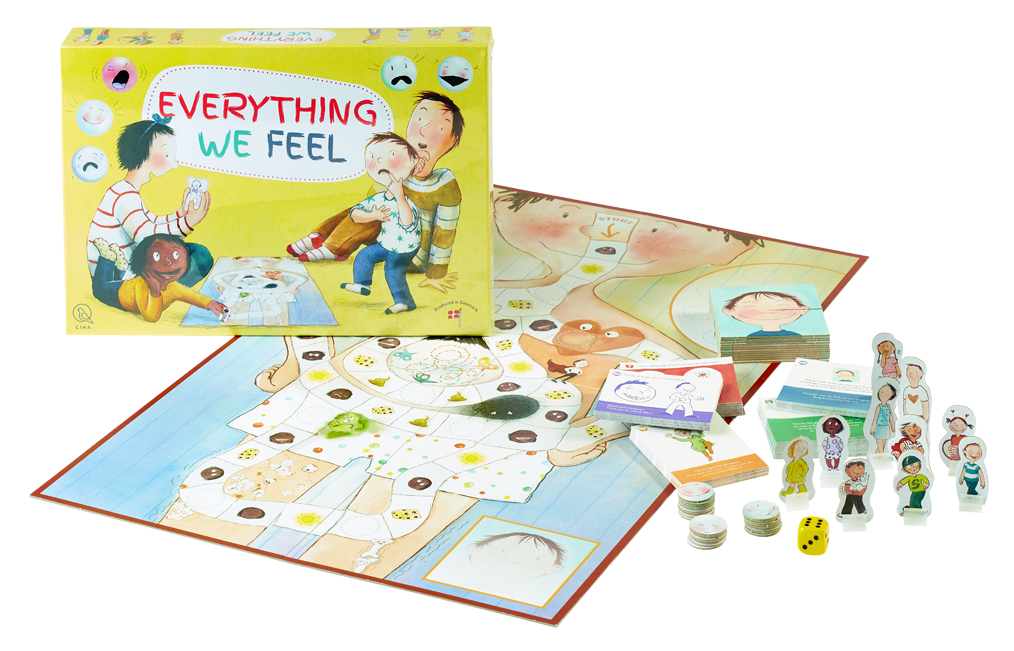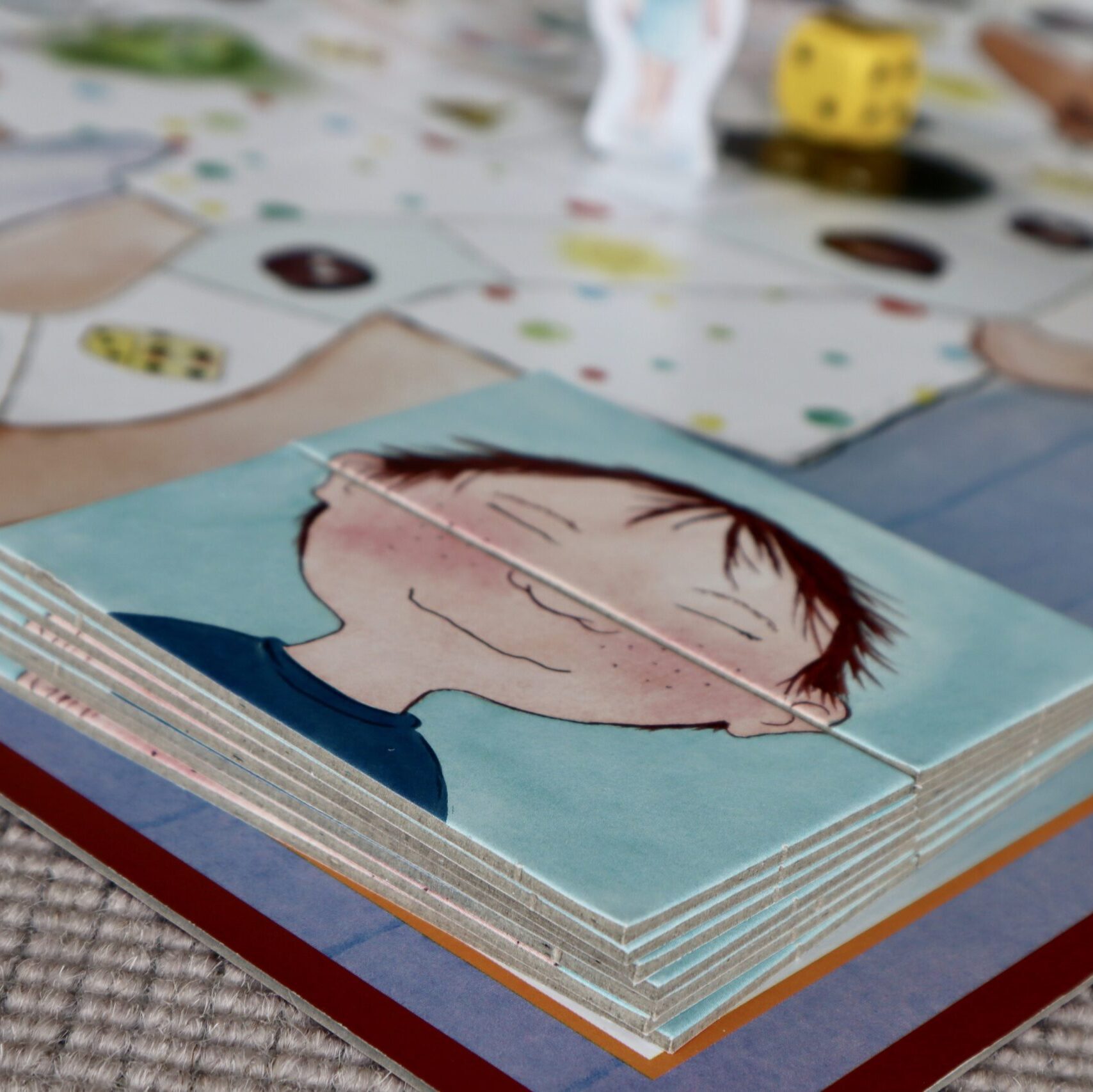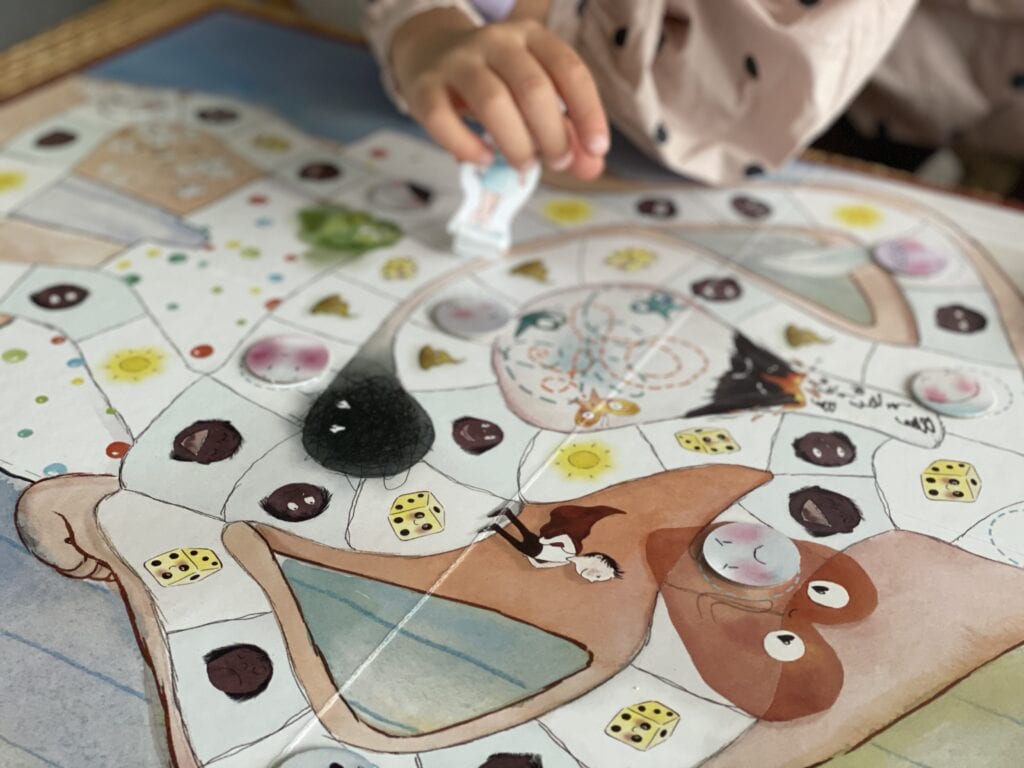A new board game that stimulates conversation about all the feelings we experience in everyday life – for children from 3 years
Why is it so important to talk to children about feelings?
Why did we create this game?
What can the game do that ordinary conversation can’t?
What is All my feelings – inside and out?
All my feelings – inside and out is a new board game that supports your child’s emotional development in a playful way. The game provides a fun and cosy playing experience, while the whole family, adults as well as children, practice talking about and sensing their feelings – both the nice and the difficult ones. In addition to creating an intimate family moment, the aim of the game in the long run is to encourage a family culture in which it is natural to talk about the feelings you experience in everyday life.
Creative and specialist content has been developed by Rebus Børneformidling, which I run together with illustrator Lea Léten. The game has been developed in collaboration with Ciha.
Why did we develop this game?
Lea Letén and I previously worked together on the danish book The little book of big feelings (2016), which has the same overall themes and purpose as the game; namely, to put conversations about feelings on the agenda for families with children.
Over the years, we have received a lot of positive feedback on the book, which inspired the idea for developing a second. But a good second version needs to be able to do something that the original can’t – something we felt was hard to do. That’s why we began to think in other directions than children’s literature. We wanted to create a product that could easily involve more children and adults, and a product that could involve the body as well as the mind when children (and their guardians) are learning about feelings.
That’s how we came up with the idea to create a game. I won’t bore you with all of our deliberations about what type of game it should be: a card game, board game, online game, app, etc. To cut a long story short, in consultation with Ciha, we came to the conclusion that a board game could do all the things we wanted for a follow-up product to The little book of big feelings.
In our view, there is a great and unmet need for an artistic and imaginative product that can accommodate both the child’s world of understanding and playful nature, while at the same time providing an easily accessible and understandable way in which parents and guardians can talk to small children about feelings.
The game can be played both at home with family, as well as with large groups of children at daycare or school.

So, what exactly can the game do?
The game can help the adults around the child talk about feelings, which is something many find difficult and even a little taboo. Nevertheless, it is really important to talk to children about feelings, as emotional development doesn’t happen by itself. Feelings, just like language and motor skills, need to be stimulated in order to develop and “grow”, so that our children can grow up with the best tools for developing a balanced emotional life and a stable self-esteem. The game supports both the acquisition of a language around feelings and the understanding of feelings – in oneself and in others.
All of this makes the game sound very complicated – but it isn’t! It comes with simple game instructions, making the game easy to get going, and can be played with children from the age of approx. 3 years and up.
Best wishes,

Ina Victoria Haller
Authorised psychologist
The game can be purchased by clicking on the picture below.
 ____________________________________________
____________________________________________
There are a number of different tasks in the game, each of which trains different aspects of emotional understanding. In the long run, this helps the child to understand and recognise their own feelings and those of others. The different types of tasks are:
- Tasks in which the child has to identify feelings in others, name them, and talk about an experience where they felt a similar emotion (The impressive and expressive understanding of emotions, as well as identifying emotions in others, is strengthened).
- Tasks that connect emotions with their associated facial expressions, gestures and/or body language (The impressive understanding and connection between body and emotions is strengthened).
- Tasks in which the child has to identify possible causes behind different emotions (impressive and expressive understanding, as well as understanding of causality (cause/effect) in emotional situations, are strengthened).
- Tasks in which the child has to assemble a face that expresses a certain emotion (impressive and non-verbal expressive understanding is strengthened).
- Tasks in which the child is asked to imitate body language and facial expressions and in doing so, guess an emotion (understanding of causality and connection between body and feelings is strengthened).


Leave a Reply